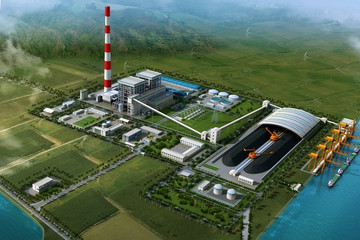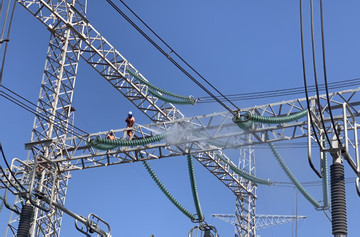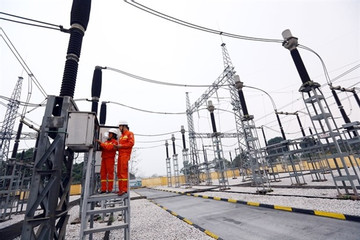- © Copyright of Vietnamnet Global.
- Tel: 024 3772 7988 Fax: (024) 37722734
- Email: evnn@vietnamnet.vn
vietnam's power market
Update news vietnam's power market
Localities pinning hopes on PDP8 to help beat the heat
Hydro and coal account for nearly 95 per cent of northern Vietnam’s energy supply, but hydro is running at around a quarter of capacity while coal capacity is just over three-quarters.
Several large power projects are behind schedule, the north in state of suspense
A number of hydraulic and thermal power projects in the north are under execution. Many of them have been proceeding slowly for many years, and it is unclear when they will be completed.
When will residents be able to choose an electricity retailer?
Building a competitive retail electricity market, where Electricity of Vietnam (EVN) is no longer the only buyer and seller, is the path that Vietnam has to choose. However, there are still challenges ahead.
11 hydropower plants cease production
Water flows have dropped to the point that 11 hydropower plants have to stop generating to ensure safety, causing a shortage of about 5,000MW in the north.
Wheels begin to turn for energy plan
The newly approved Power Development Plan VIII could open up new space for the country to realise its green path and eliminate bottlenecks in deploying renewable energy.
PM requests inspection of electricity supply
Prime Minister Pham Minh Chinh has instructed the Ministry of Trade and Industry to establish a team to inspect the electricity supply of Vietnam Electricity Group (EVN) from 2021 to June of this year.
PM orders solutions to ensure power supply in dry season
Prime Minister Pham Minh Chinh has ordered drastic measures to ensure electricity supply in this dry season and the coming time.
Minister explains why Vietnam imports electricity from China and Laos
Minister of Industry and Trade Nguyen Hong Dien says Vietnam imports electricity from China and Laos, but the import volume is small, and is mostly provided to border areas.
Investors in 65 renewable energy projects seek pricing talks with EVN
Investors in 65 out of the total 85 renewable energy transition projects, with a combined capacity of 3,640 MW, have written to Vietnam Electricity Group (EVN) proposing pricing negotiations before purchase agreements are reached.
People, enterprises save electricity in prolonged hot weather
The power supply in the dry season this year is predicted to be challenging due to the significant rise in electricity demand.
More power cuts expected this summer as peak load hits all-time high
Production businesses and people are likely to suffer from more power cuts amid the northern and central regions set to endure more scorching heat waves over the summer.
National Power Development Plan VIII – breakthrough in energy sector
Vietnam targets that by 2050, coal will have no longer been used for power generation but biomass and ammoniac instead. Coal-fired power plants aged over 40 years will be closed if they are unable to switch to other fuels.
National Power Development Plan VIII to ensure national energy security
The National Power Development Plan VIII, which has been recently approved by the Prime Minister, aims to ensure national energy security, thus satisfying the country's socio-economic requirements in the time ahead.
Power overhaul plan picks up steam
The newly approved Power Development Plan for this decade heads up a charge to adhere to Vietnam’s strong commitments to net-zero, but there is still an enormous amount of work to be done.
Vietnam uses different power sources to optimize costs
The volume of electricity imports is small, mostly from China and Laos, according to the Ministry of Industry and Trade (MOIT).
Electricity imports from Laos, China account for just a small part: ministry
Electricity imports from Laos and China accounted for just a modest part of the total electricity demand of Vietnam, Deputy Minister of Industry and Trade Dang Hoang An.
NA deputies question power import amid abundant renewable energy
Many NA deputies raised the question of why Vietnam has to import electricity from Laos and China while 4,600 MWs of renewable energy are wasted and not allowed to connect to the national power grid.
Vietnam faces power shortage despite excess of renewable energy
While renewable energy sources are currently in surplus, the national power system in 2023 is at risk of experiencing electricity shortages due to extreme weather conditions and many hydropower plants reaching dangerously low water levels.
All systems go for energy security
The newly approved Power Development Plan VIII for 2021-2030, with a vision to 2050, is designed to improve the country’s energy security and set out a roadmap for developing energy sources towards a green path.
EVN to increase electricity import from China, Laos
The Vietnam Electricity Group (EVN) is negotiating to purchase more electricity from China and Laos, according to EVN General Director Tran Dinh Nhan.



















